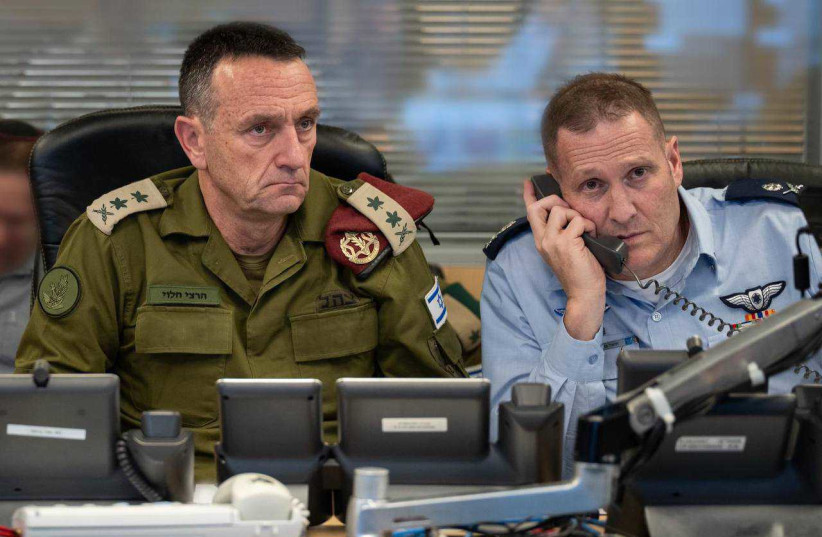|
Getting your Trinity Audio player ready...
|
Israel’s Precision Strike on Iran Signals Calculated Escalation
Edited by: Fern Sidman
Israel’s recent strike on Iran on has marked a new level of direct conflict between these longtime adversaries, yet it appears to be measured enough to avoid a full-scale war. In a first, Israel publicly admitted to conducting this operation within Iran, focusing on military facilities rather than nuclear sites, which The New York Times reports the Biden administration had advised against targeting. Israeli officials have confirmed that the attack aimed at roughly 20 sites, including air defense installations, radar stations, and missile production facilities. By choosing these targets, Israel seems to be signaling its intent to limit the conflict’s scope, even as tensions rise.
Iran’s response has been notably restrained, downplaying the impact of the strike, which reportedly left four soldiers dead. Iranian officials indicated that the attacks hit military sites across three provinces, yet air defenses helped reduce the damage. The New York Times report indicated that Tehran itself was spared, and civilian airports continued normal operations despite the sound of explosions throughout the capital. Iran’s muted reaction may help contain the situation for now, but it leaves Tehran at a critical juncture: a retaliatory response could escalate the crisis, while restraint may weaken its standing among allies and the domestic populace.
The strike followed a significant escalation earlier this month, when Iran launched a barrage of ballistic missiles at Israel in retaliation for assassinations targeting Iranian and allied officials. This cycle of tit-for-tat strikes has brought the two countries closer to open confrontation, especially as the ongoing Israel-Hamas conflict has intensified regional alliances and proxy skirmishes. According to the information provided in the New York Times report, Israel’s airstrikes are a part of a broader strategy targeting Iranian interests and its allies across the region, a strategy that has ramped up over recent years as tensions between Israel and Iran have edged closer to direct conflict.
For years, the confrontation between Israel and Iran has primarily unfolded as a shadow war, with covert operations and attacks on each other’s assets and allies, rarely acknowledged publicly. However, as The New York Times highlights, the current crisis has pulled both nations toward more direct engagement, influenced heavily by Iran’s support for Hamas in Gaza. The Hamas-led assault on Israel a year ago spurred Israel’s intense military campaign in Gaza and drew in Iran’s other proxies, including Hezbollah in Lebanon, who launched attacks on Israel to show solidarity with their Palestinian allies.
This chain reaction has locked Israel and Iran into a dangerous cycle of escalation. As The New York Times report described, each side has been “pulled… toward a direct clash,” with the stakes of every action higher than before. Both nations, equipped with powerful military capabilities, now face the complex challenge of balancing assertive action with calculated restraint to avoid plunging the region into an uncontrollable conflict. Israel’s precision in its target selection and Iran’s restrained response highlight the fine line both countries are treading as they navigate this tense and volatile standoff.
Iran has strongly condemned Israel’s recent military actions, accusing it of fueling regional instability. According to The New York Times, Iran’s Foreign Ministry has responded by asserting that Tehran is both “entitled and obligated to defend itself against foreign acts of aggression.” While Iran’s state-run media, including outlets connected to the influential Islamic Revolutionary Guards Corps (IRGC), have downplayed the scale of the attacks, the rhetoric from Iranian officials suggests a deepening hostility that could further escalate the conflict.
Meanwhile, Israel’s military operations in Gaza and Lebanon have intensified, with its northern Gaza offensive now entering its third week. The New York Times reported that Israeli air and ground forces have engaged in significant combat across the region. In Gaza’s Jabaliya area, Israeli airstrikes have reportedly killed three individuals, as stated by Palestinian news media. Beyond Gaza, Israel has been actively striking targets in Lebanon, clashing with Hezbollah fighters at various sites over the last day. This multifront campaign highlights the widening geographic scope of Israel’s military strategy, which has drawn in multiple adversaries in the region.
In addition to its direct military actions, Israel has coordinated with its allies regarding these operations. The Pentagon confirmed that Defense Secretary Lloyd J. Austin III was briefed on the situation through discussions with Yoav Gallant, Israel’s defense minister. Sean Savett, representing the National Security Council, noted that the United States had been informed about Israel’s intentions before the strikes began. The New York Times report emphasized that this level of communication draws attention to the critical interest the U.S. has in maintaining regional stability amid escalating violence.
Israel has also issued a stark warning to Iran, cautioning against any further provocations. The Israeli military released a statement asserting that it would be “obligated to respond” to any additional acts of aggression from Tehran. In a press briefing, Israeli Rear Admiral Daniel Hagari, a military spokesperson, noted that, despite the heightened rhetoric, there were no immediate changes to the nation’s civil defense protocols, suggesting that Israeli authorities do not currently anticipate a direct counterattack from Iran, the New York Times report said. This tempered response may indicate Israel’s strategic aim to control the escalation, maintaining a defensive posture while actively addressing threats on multiple fronts.
As The New York Times outlines, this tense situation reflects the complexities of a conflict that spans across several volatile regions. With both Iran and Israel positioned as influential forces in the Middle East, their actions are being closely monitored, as any further military engagement could lead to broader destabilization across neighboring countries. For now, Israel’s intensified strikes and Iran’s guarded yet assertive response underscore the delicate balance both nations are attempting to maintain in a region on the edge of crisis.





